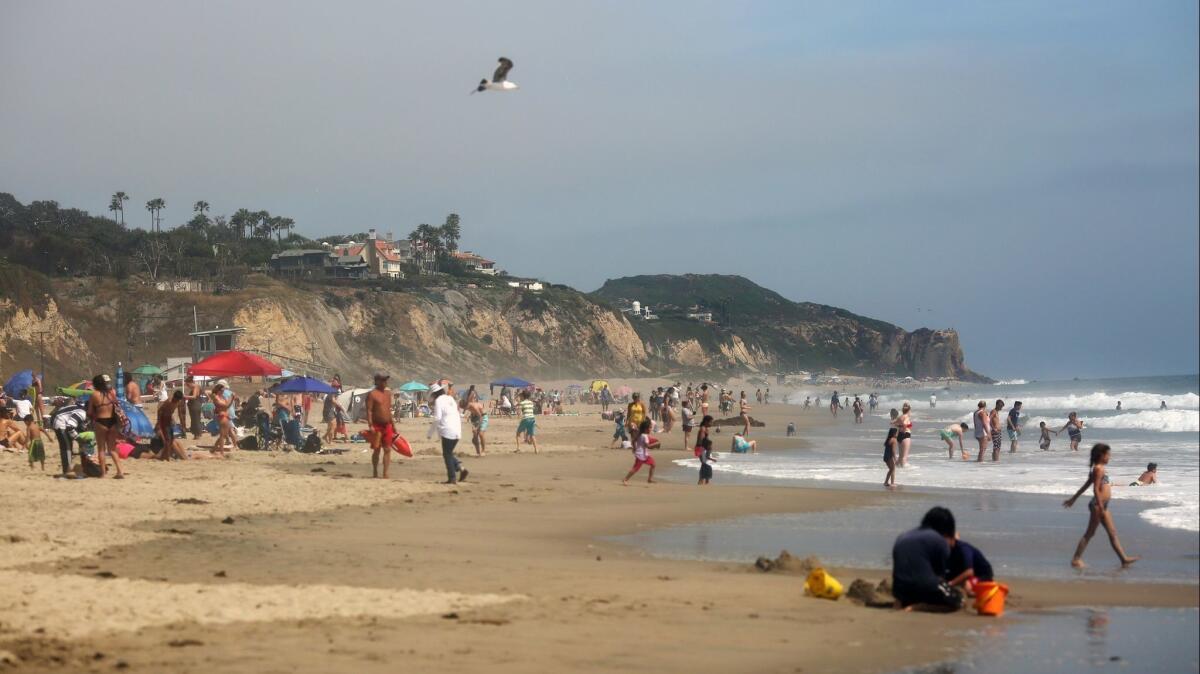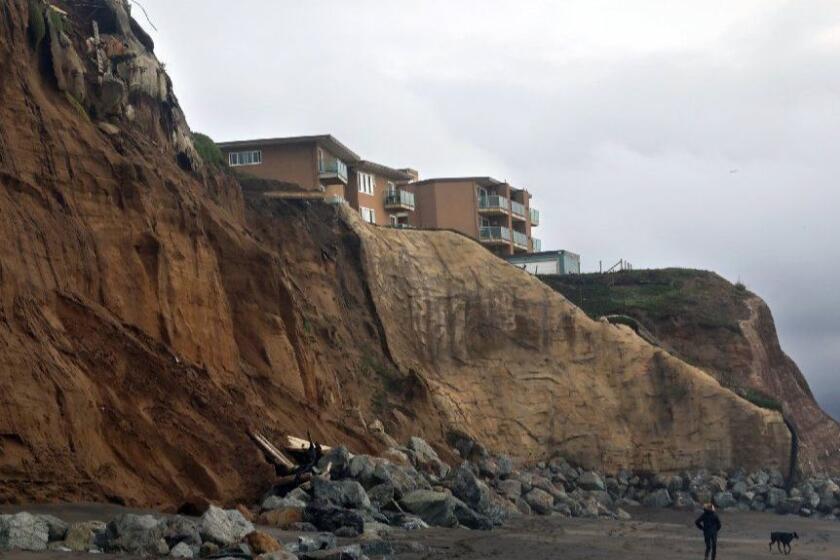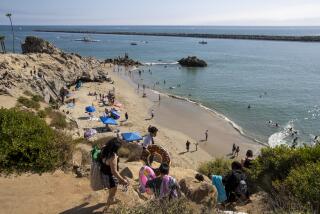California’s beaches closures offer a glimpse of the likely future. That should frighten us

- Share via
There’s nothing like a global pandemic to remind us of what we truly value. As mortality rates and economic upheaval fill the headlines, we in coastal California are also grappling with another significant change: the closing of our beaches and the severing of our access to the sea.
For the first time in history, most people in Southern California, under stay-at-home orders, are completely banned from surfing, sunbathing, fishing or building sandcastles at the ocean’s edge. It is hard to understate the magnitude of this situation or how portentous it is.
Californians are extremely attached to coastal places. The annual California State University Channel Islands Coastal Survey has found that sandy beaches are so central to our identity that when asked for words that come to mind when prompted with “California,” survey respondents overwhelmingly answered “sunny,” “beach” or similar phrases. The survey also found that 8% of the residents of Los Angeles, Ventura and Santa Barbara counties go to the beach daily, 31% go at least weekly and 61% go at least monthly. One-third of us went to the beach before our first birthday; half of us before our second.
Some 77% of Californians say the “condition of the ocean and beaches is very important to the economy and quality of life for California’s future.”
This deep love of the coast is what prompted Californians, by an overwhelming majority of initiative voters and then legislators, to create the Coastal Act, ensuring and protecting the public’s access to the shore. The monetary value of this access adds up, with ocean-dependent tourism and recreation in Southern California’s five coastal counties alone contributing more than $12 billion to the state GDP in 2016.
The current beach closures are giving us a glimpse of Southern California’s likely future: one with fewer and smaller beaches nearly as inaccessible as they are right now. An estimated 31% to 67% of Southern California’s beaches will be completely gone by 2100, according to the U.S. Geological Survey.
Even as quakes, wildfires and drought have taken up most of our focus, the slow-moving disaster of rising seas has paralyzed Californians, and left us with “both too much and not enough time” to act, as environment reporter Rosanna Xia wrote in a special report examining sea level rise and the future of California’s disappearing coastline.
Climate-change-driven sea-level rise and ever more powerful, sand-robbing storms increasingly gnaw away at the ocean edge of our beaches. Property owners have responded by pouring more concrete, piling up mountains of boulders or otherwise armoring the landward side of beaches to shield property and structures from the encroaching sea.
As of 2018, 38% of Southern California’s coastline was armored to combat that erosion. Unfortunately, such protection sacrifices public access and, ultimately, the beach sand itself thanks to altered wave energy focus and increased scouring of the beach face.
Fostering a future rich with beaches requires new, well-informed approaches to face this looming threat. We do have the tools to respond to beach loss. Chief among these is “managed retreat.” Letting beaches and coastal ecosystems evolve naturally and migrate inland as the sea level rises is one way of ensuring they continue to exist. We’ve done this successfully at Surfers Point in Ventura and on the Pacific Coast Highway at the base of the Big Sur coast. Firmly opposing coastal armoring is another. We need infrastructure such as public parking lots and stairways to access the beach, but we need a beach to access in the first place.
Governments everywhere under-invest in shoreline protection. California is no exception. We spend less than $100 million a year on the health of the state’s sandy beaches. More public resources could help us improve coastal monitoring to know where and how to focus limited dollars, make the coastal infrastructure more cost effective and better help homeowners and local governments develop realistic plans for the future.
We are all now seeing what happens when we fail to invest in crisis planning and ignore pending threats. Improved public investment on the shoreline can help us avoid repeating this mistake.
With the pandemic raging, Californians need to live by the public health measures communities are taking to stop the spread of the coronavirus. For now, that includes avoiding the beaches, which are so much a part of the California dream. This forced separation from the surf should motivate us to support more policies that preserve our glorious coastline before much of it is gone for good.
Sean Anderson, Kiki Patsch and Dan Reineman are professors of environmental science and resource management at California State University Channel Islands.
More to Read
A cure for the common opinion
Get thought-provoking perspectives with our weekly newsletter.
You may occasionally receive promotional content from the Los Angeles Times.










